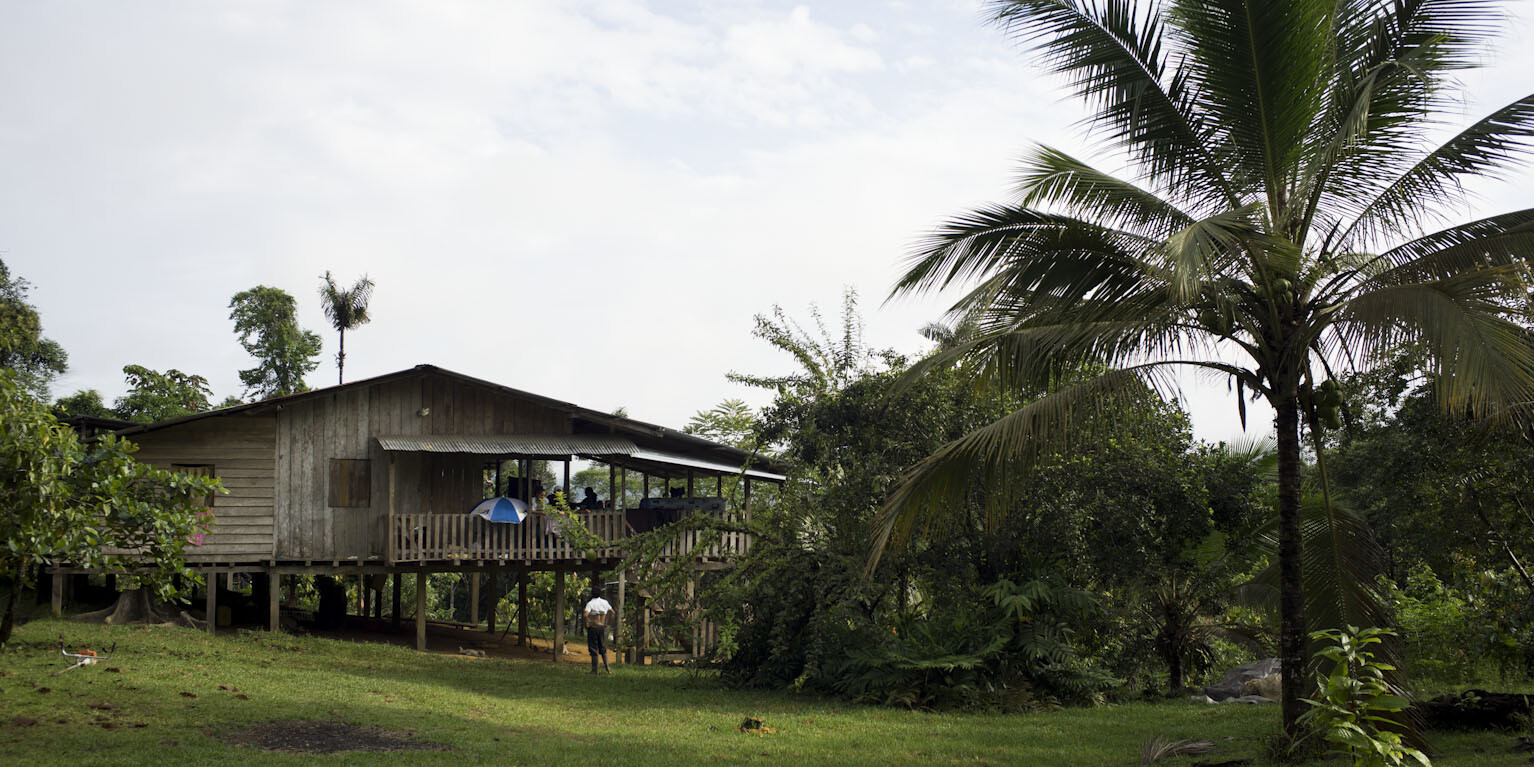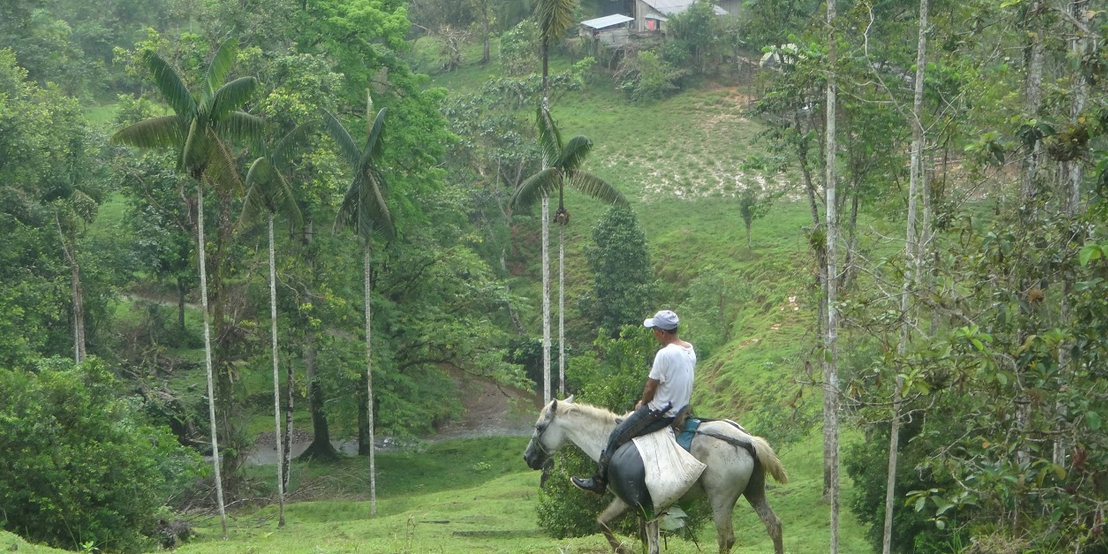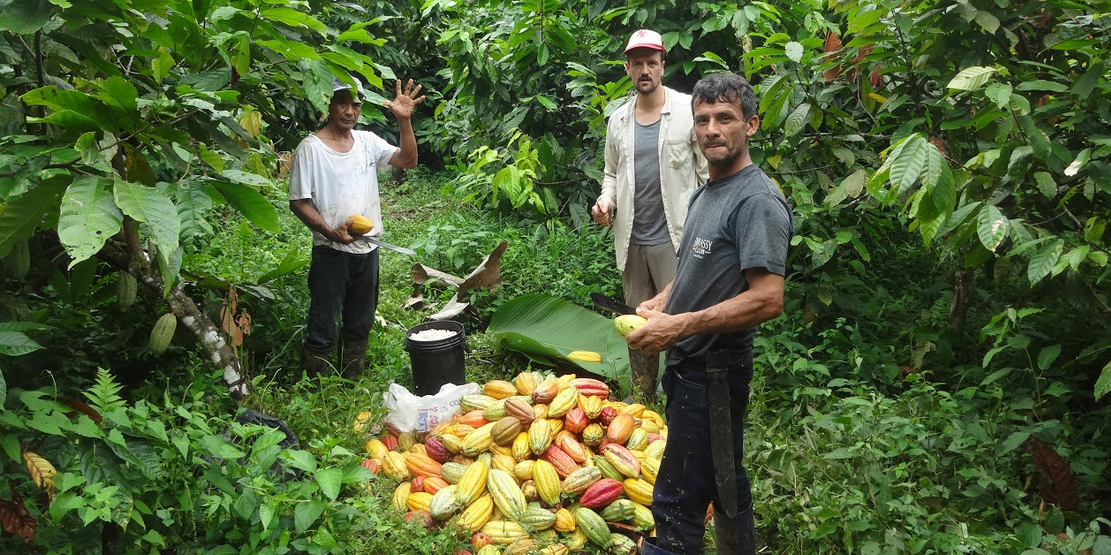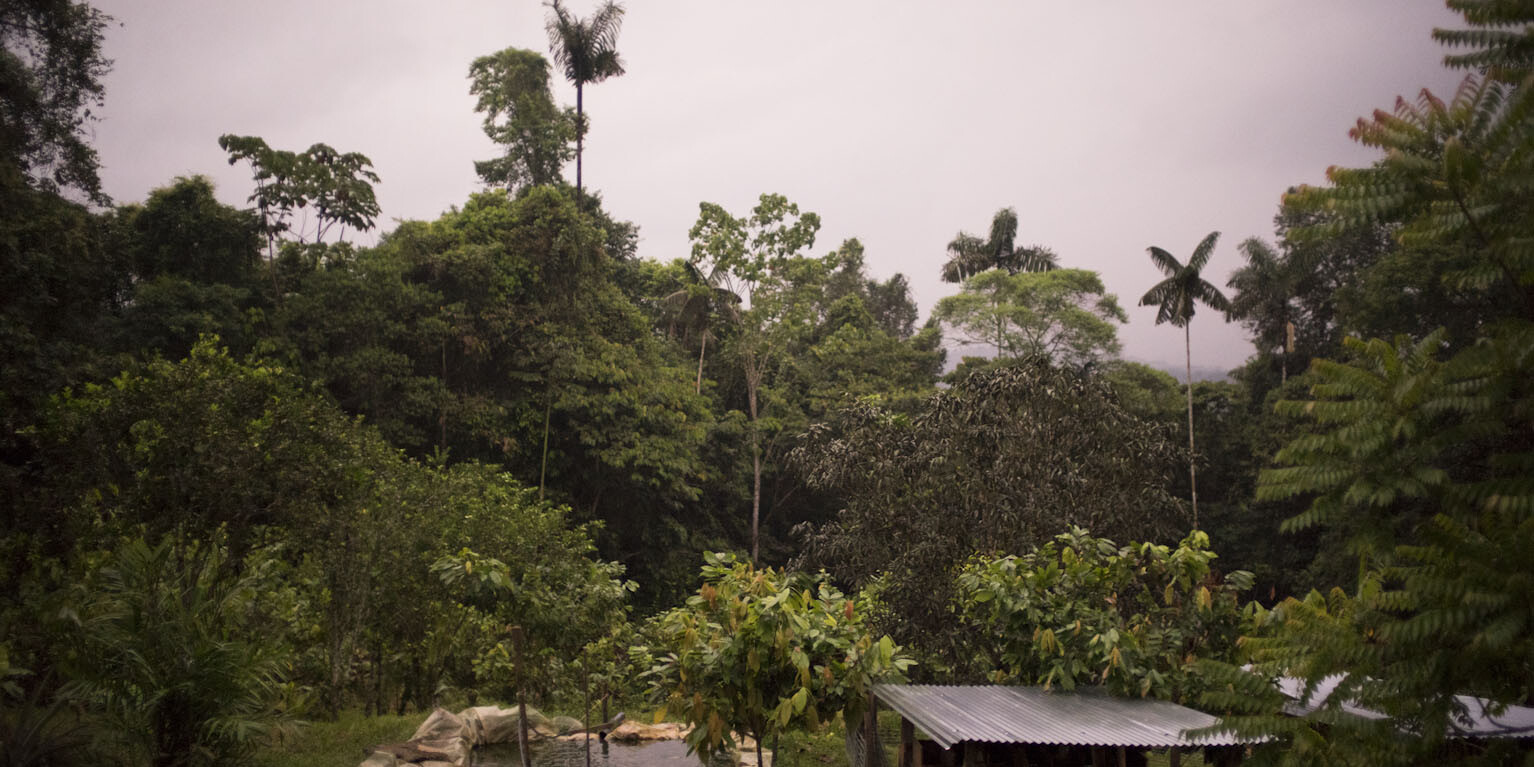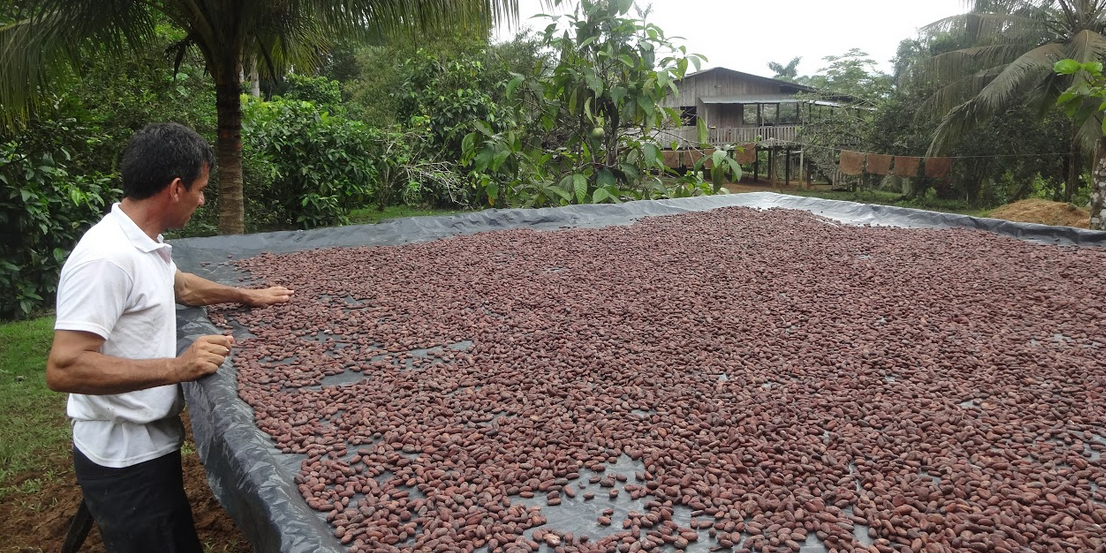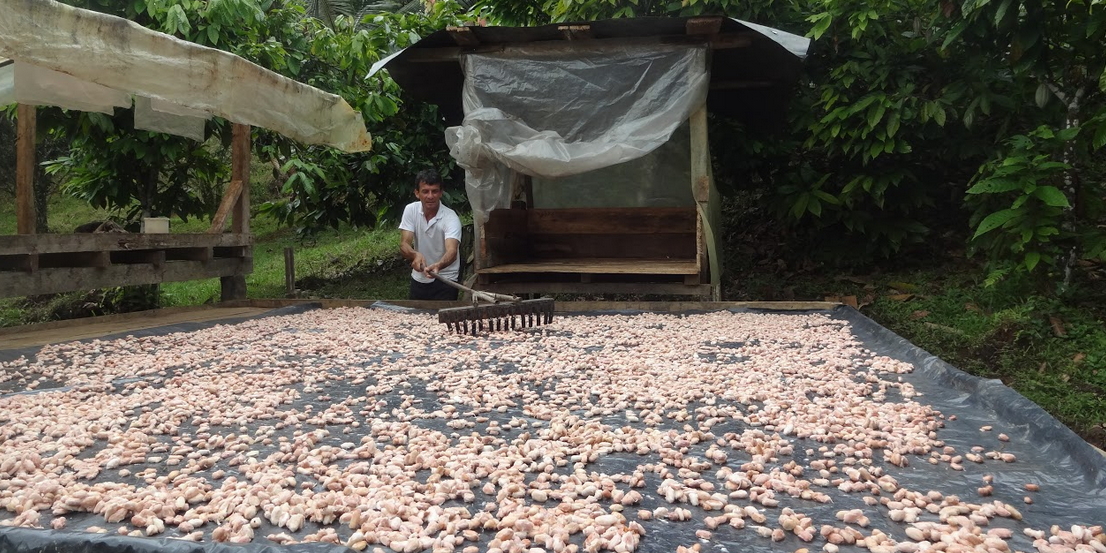After a somewhat difficult communication via satellite phone, the only possible way, a very bumpy car ride and two car repairs, Emanuel, Antonio and I finally reach Tesoro Escondido (Spanish: “hidden treasure”, approx. 4 hours drive from Las Golondrinas) late in the evening. Rosi, Romi and Ronaldo kindly receive us and light the way through rain and mud to their house. Like all the farmers here, their mother Magali and their father Javier, cacao farmer and president of the ASOPROTESCO/Tesoro Escondido cooperative, built it themselves out of wood. It is built on high poles and consists of four small bedrooms and a huge veranda. The veranda is the living and working area. This is where they cook, eat, shower, wash and play. Javier and Magali’s cacao trees are spread around the house on an area of almost five hectares. In addition, there are many fruit trees, chickens, a pig, and a pond with fish. Everything to ensure self-sufficiency. The water is drawn from a spring. During the dry season, it can become scarce after only one week without rain. Seeing how much it rains these days, I can hardly imagine this. Even with rubber boots, it takes a great deal of skill to be able to wade through the sometimes knee-deep mud unharmed.
The next day, Javier and Antonio proudly show their plantations and best trees. From the second day onwards, work is calling. We harvest one of Antonio’s plots. Color and incision of the fruit peels reveal the level of ripeness. The steep and slippery terrain makes it difficult to work, but after half a day we have gathered a quintal (a unit of weight in Latin America equivalent to 50 kg). Antonio has a horse that he trusts with such loads. At his place, the fresh cacao beans are pre-dried and a well-deserved lunch is served. Homemade cheese, rice and beans. For dessert, a pineapple that tastes so good that we’ll probably remember it for a long time. Over the next few days, we often work on Javier’s property. The grass must be cut, so the air beneath the trees can circulate better, making harvesting easier. In flat terrain with a lawn trimmer and in steep terrain with a machete. We harvest a plot, build a new fermentation box, plant new seedlings, prune trees and take care of the cuttings to prevent diseases from entering the plant. After only 30 minutes, the clothes are as sweaty as if you had jumped into a pool, and they don’t dry until the next day either. Other than that, the climate is actually quite pleasant.
In the evening, cacao beans are cut open, and we talk about the degree of fermentation and quality. Sometimes after dinner we play cards or sing. The highlights are the Sunday excursions to the surrounding area. Whether it’s canoeing past – or at least trying to canoe past – logs and rapids, accompanied by thousands of frogs and fireflies or walking through forest and streams in search of monkeys. Unfortunately, we did not find any, but we laugh a lot and enjoy delicious picnics wrapped in banana leaves.
I am grateful for these two exciting, impressive and beautiful weeks and hope to visit this great place and these wonderful people again soon. I can highly recommend it to you. By the way, Javier, Magali and their children would like to expand their house to offer sustainable tourism in the near future. They recently started to have internet connection as well. So the chances of reaching their house are increasing 😉
Also, building a new bridge would make getting to school and transportation easier, which is why there is a campaign going on right now on GoFundMe.
https://www.facebook.com/ASOPROTESCO/

